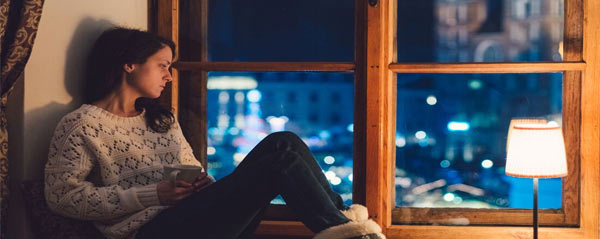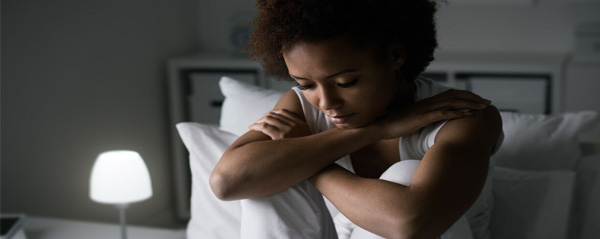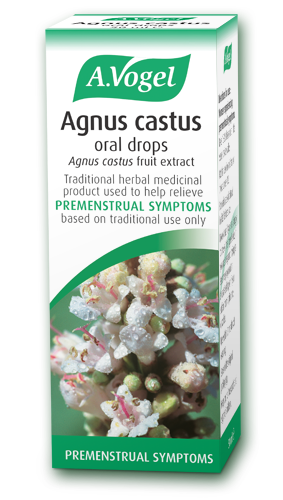What is SAD?
Cold weather making you miserable? Can you feel that familiar dark cloud descending along with the darker days? Then you might have SAD, or Seasonal Affective Disorder. But what exactly is it? Is it real, or just a new fad?
SAD is a very real type of depression that is only experienced during the winter months (though very occasionally it can be experienced during summer, known as reverse-SAD). It is thought that SAD is caused by the reduced levels of daylight during the winter months, which can disrupt our internal clocks and sleep patterns, reduce the levels of serotonin (our happy hormone) released in our brain and boost our levels of melatonin (our sleepy hormone).
In addition, factors such as the cold, lack of exercise and not being able to enjoy the same hobbies as you can during the summer, can also play a role in SAD. 
So why does SAD affect women more than men?
According to recent research by YouGov and The Weather Channel, 1 in 3 people in the UK suffer from SAD, and women are 40% more likely to be one of these. The exact reason why women are more at risk of developing winter depression is not fully understood, but there are several theories.
Hormones
Firstly, we know that women are more at risk of depression anyway, in part due to hormonal fluctuations. Women experience all kinds of hormonal-related conditions such as menstruation, PMS, postnatal depression and the menopause, which can all have a huge impact on mood, energy levels and even our physical bodies. Depression is also a side effect commonly associated with hormonal contraceptives, particularly the pill. These physical factors, coupled with social and cultural pressures to look or act a certain way put women at risk of developing depression – and the darker winter months can act as a trigger for symptoms.

Easier diagnosis
Secondly, women are more likely to display ‘typical’ symptoms of depression – sadness, fatigue, disinterest and weepiness – making a diagnosis of SAD much easier. Men, on the other hand, are more likely to adopt destructive behaviours such as alcoholism or drug use when suffering from depression, which are often passed off as simply being character flaws – or in some cases simply the harmless traits of a fun-loving party animal.
And finally, women are generally more likely to see a doctor to discuss these symptoms than men are, so a diagnosis of SAD is more likely.
So while women are more likely to develop SAD, being more at risk of depression anyway, we can also see that these figures may be exaggerated by the fact that women are more likely to get an accurate diagnosis. There may be many, many men out there silently suffering from SAD, and to those men I say make an appointment with your doctor! Talking about your feelings can be embarrassing, but doctors are professionals, and the modern world is much more accepting and understanding of conditions like depression than in the past, so there’s really no need to be embarrassed!

What can women do during the winter to reduce the effects of SAD?
We know that hormones can play a big role, so try taking a gentle supplement to help balance these fluctuations. Agnus castus is great for this, and it is licensed for the relief of PMS symptoms. However, you can’t take it if you are on hormonal contraceptives, so if this is you, then you could try our Female Essence instead; a gentle flower essence that helps support you through the challenges of being a woman.
Aside from this, follow my general advice for getting through the winter months with SAD. This includes things like:
- Getting more exercise. A quick 20 minute walk can really help, but ideally something a bit more demanding such as jogging, playing sport or swimming is best to really boost those endorphins
- Eating a good, balanced diet to avoid slumps in energy levels or nutrient deficiencies
- Making time to see other people. Visit family, make lunch and coffee appointments during the week, and have friends over for dinner, drinks or a movie. If you feel isolated during the winter, try joining a club or do some volunteering
- Taking a herbal remedy such as St John’s Wort, or a flower essence such as Mood Essence.

And finally, there is loads of evidence to suggest that pets can help with stress, depression and SAD. What better excuse to buy that puppy or kitten you’ve been dreaming about?? If you don’t have time for a younger pet, there will be plenty of older pets looking to be rehomed in your local shelter. But remember, pets are a long-term commitment, not just a temporary solution!
If you don’t have time to commit to a pet, then you can offer to look after a friend’s, volunteer at an animal shelter, offer your services as a dog-walker (and earn some extra cash!), or join a scheme like BorrowMyDoggy for some much-needed pet therapy!

Learn to take advantage of the winter months!
Winter can actually be a great time to relax, focus on yourself and learn some new skills. My favourite winter hobby is yoga, because it’s so easy to do from the comfort of your living room. Not only is it good exercise but the ancient practice focuses on harmonising the body and mind, and promoting inner peace. Try Yoga with Adriene for video tutorials bursting with positivity and self-love – there’s even one tailored specifically for winter blues!
If yoga isn’t your thing, there are plenty of other productive things you can do to really make the most of the time you spend indoors – redecorate the house, challenge yourself to read all those books in your ‘to read’ pile, write a book if you fancy, learn an instrument, try some new cooking styles, or pick up the paintbrushes.
And as often as you can, try to get outside and soak up some natural daylight – even a quick walk on your lunch break can help boost your serotonin!









